- Home
- Adam Roberts
The Riddles of The Hobbit
The Riddles of The Hobbit Read online
The Riddles of The Hobbit
Also by Adam Roberts
Fiction:
JACK GLASS
MARTIN CITYWIT
BY LIGHT ALONE
ANTICOPERNICUS
NEW MODEL ARMY
Non-Fiction:
FIFTY KEY FIGURES IN SCIENCE FICTION (co-editor with Mark Bould, Andrew M. Butler and Sherryl Vint)
THE ROUTLEDGE COMPANION TO SCIENCE FICTION (co-editor with Mark Bould, Andrew M. Butler and Sherryl Vint)
THE HISTORY OF SCIENCE FICTION
VICTORIAN CULTURE AND SOCIETY: The Essential Glossary
SCIENCE FICTION
The Riddles of The Hobbit
Adam Roberts
Professor of Nineteenth-Century Literature, Royal Holloway,
University of London, UK
© Adam Roberts 2013
All rights reserved. No reproduction, copy or transmission of this publication may be made without written permission.
No portion of this publication may be reproduced, copied or transmitted save with written permission or in accordance with the provisions of the Copyright, Designs and Patents Act 1988, or under the terms of any licence permitting limited copying issued by the Copyright Licensing Agency, Saffron House, 6–10 Kirby Street, London EC1N 8TS.
Any person who does any unauthorized act in relation to this publication may be liable to criminal prosecution and civil claims for damages.
The author has asserted his right to be identified as the author of this work in accordance with the Copyright, Designs and Patents Act 1988.
First published 2013 by
PALGRAVE MACMILLAN
Palgrave Macmillan in the UK is an imprint of Macmillan Publishers Limited, registered in England, company number 785998, of Houndmills, Basingstoke, Hampshire RG21 6XS.
Palgrave Macmillan in the US is a division of St Martin’s Press LLC, 175 Fifth Avenue, New York, NY 10010.
Palgrave Macmillan is the global academic imprint of the above companies and has companies and representatives throughout the world.
Palgrave® and Macmillan® are registered trademarks in the United States, the United Kingdom, Europe and other countries.
ISBN 978–1–137–37363–2
This book is printed on paper suitable for recycling and made from fully managed and sustained forest sources. Logging, pulping and manufacturing processes are expected to conform to the environmental regulations of the country of origin.
A catalogue record for this book is available from the British Library.
A catalog record for this book is available from the Library of Congress.
Typeset by MPS Limited, Chennai, India.
Contents
List of Illustrations
Introduction
1 The Anglo-Saxon Riddleworld
2 Cynewulf and the Exeter Book
3 Riddles in the Dark
4 The Riddles of the All-Wise
5 The Puzzle of the Two Hobbits
6 The Riddle of Bilbo’s Pocket
7 The Riddle of the Ring
8 The Lord of the Rings and the Riddle of Writing
9 The Volsung Riddle: Character in Tolkien
10 The Enigma of Genre Fantasy
11 … And Back Again?
Notes
Bibliography
Index
List of Illustrations
4.1 Thor protects his daughter as he riddles a rather egg-like Alvíss: illustration by W. G. Collingwood (1908)
Introduction
The Hobbit was after all not as simple as it seemed.
(Tolkien, writing to Stanley Unwin, 31 July 1947)
We call it a riddle because it rids us of something—and what it rids us of is precisely our investment in the four-square, straightforwardness of comprehension. The world is not simple.
(Pierre Delalande)
Riddles have lost none of their power over us. There are many examples of this fact in our twenty-first century lives, from crossword and Sudoku puzzles, to children’s rhymes and Christmas cracker gags (and ‘when is a door not a door?’ is just as much a riddle as the door without hinges, key or lid)—indeed, these are just the tip of the iceberg. Some of the most popular modes of art today manifest the riddle as both form and rationale. Crime novels, for instance, very rarely describe crime as it actually occurs in the world—that is to say, crime writers very rarely construe their stories as either obvious, or else incomprehensible, which are the two main ways that crime actually presents itself (for social offences are either lamentably straightforward, or else unsolved, estranging and deracinating). There are good dramatic reasons for this, for stories that style crime as stupidly obvious or randomly baffling are unlikely to engage a large audience. Crime in the real world is about the disruption of order, but our appetite for story is a desire for closure and so that is what crime fiction provides us. To put it simply, crime fiction says: crime is a riddle. More, such fiction invariably includes the solution to its riddle.1 The classic puzzle-whodunit is one mode of this; a complex riddle in which we are given textual space and leisure (as the story unfolds) to ponder, before the surprising solution is revealed. So successful has this mode been it has spilled into other modes. A show like Fox Network’s House (2008’s globally most watched television show) tropes disease, and by extension health as a riddle to be solved. Sherlock Holmes, upon whom the ‘House’ character was based, continues to be prodigiously popular (an ongoing motion picture franchise and two big TV serials based upon a modern-day version of him)—and much of his appeal is that he treats everyday life as full of solvable riddles, riddles that other people do not even notice. A novel like Dan Brown’s The Da Vinci Code (2001) has even larger ambitions, for it styles not just murder but religion as a riddle, and presents us with a protagonist who is a professional riddle-solver. The phenomenal commercial success of this title can in part be explained by the way it leavens its narrative with a string of riddles for the reader to solve as she goes along. I can not pretend I have the highest opinion of Brown’s talents as a writer, but it seems to me that there is something more ambitious than simply crowd-pleasing in his novel: presenting for a mass audience not only religion as a riddle, but religion as a riddle that can be solved. Brown’s immense commercial success, quite apart from anything else, suggests common ground between cryptic crossword puzzles and the most profound religious mysteries of men and women, life and death. Brown’s talents as a writer are not able to match the grandeur of this connection, but some sense of it hangs about the creaky pulpisms of the novel and connected with enough readers to make it so colossal a bestseller.
Tolkien is another writer of quest narratives, and a man and an artist profoundly concerned with religious questions. This is one of the jumping-off points of this present study. Religious mysteries are, in a strict sense, riddles. That might look like a trivialising way of talking about faith, but I prefer to think of it the other way around—as a way of elevating the significance and dignity of riddles. Perhaps it would be better to say that even though they may seem trivial, riddles embody in a small way a very large observation about human existence. Life riddles us.
Saint Paul, in his letter to the Ephesians, puts it like this: ‘If ye have heard of the dispensation of the grace of God which is given me to you-ward: how that by revelation he made known unto me the mystery; … which in other ages was not made known unto the sons of men, as it is now revealed unto his holy apostles and prophets by the Spirit’ (Ephesians, 3:2–5). In other words, Paul says: existence is a riddle of which the solution has been unknown, until now. The solution he proposes is, in a word, Christ. But this answer folds back on itself in that the answer to this riddle is itself a riddle, what Paul
calls ‘the mystery of Christ’. Later in the letter Paul hopes that his readers ‘may be able to comprehend and to know the love of Christ, which passeth knowledge’ (Ephesians 3:18–19). That we can be assured of knowledge of something which passeth knowledge, and comprehension of the incomprehensible, speaks to the way the logic of the riddle goes deeper than simply ‘question plus answer’. This, I think, is why it is worthwhile to work, as it were, upwards from the simple riddle to the largest questions of God and the universe. Such a trajectory is, a Christian might note, the gradient of Christ’s own human incarnation as a gateway to the suprahuman divine. Besides, to come at it the other way around is to knock one’s head against the very enormousness of the enquiry. ‘There are certain questions’, Thomas Hardy once said, ‘which are made unimportant by their very magnitude. For example, the question whether we are moving in Space this way or that; the existence of God, etc.’2 A very unHarydesque writer, Tolkien constructed his own art upon his faith, and therefore upon his belief that such questions are not only important but answerable, although the answers may be neither straightforward nor convenient.
Catholicism is one important context for Tolkien’s writing. Another, more obvious one, is the culture and art of northern Europe and Scandinavia during the first millennium. Tolkien immersed himself, professionally and creatively, in the culture of the Anglo-Saxon, Norse and Icelandic Dark Age peoples. He was a medievalist too, and a philologist, but when it came to writing his greatest novels he drew on the myths, literature and culture of an earlier period, the Dark Ages. In this first chapter I will go on to argue that riddles are a central feature of the Anglo-Saxon world. Tolkien certainly had a taste for them himself. The fact that he put a very high premium upon truth (as he certainly did) fed rather than denatured his fascination with ironic, riddling and unstraightforward talk.
Asked whether the riddles in The Hobbit were his own original compositions, or else versions of traditional Anglo-Saxon riddles, Tolkien wrote to one correspondent strongly implying the former, and to another strongly implying the latter. That he could do both without mendacity is a function, I think, not of evasion but on the contrary of an active delight in riddling and misdirection—for to read both letters (they are discussed below, pp. 68–9) is amongst other things to see how precise Tolkien’s use of language was. His letters are full of ludic diversions, games, wit and puzzles, designed to divert and amuse his correspondents. Tom Shippey, the best critic to have devoted his attentions to Tolkien, records a letter he received from the man himself in 1970 responding to some of Shippey’s criticism.
I do turn back to the letter Professor Tolkien wrote to me on 13 April 1970, charmingly courteous and even flattering as it then was from one at the top of his profession to one at the bottom (‘I don’t like to fob people off with formal thanks … one of the nearest to my heart, or the nearest, of the many I have received … I am honoured to have received your attention’). And yet, and yet … What I should have realised—perhaps did half-realise, for I speak the dialect myself—was that this letter was written in the specialised politeness-language of Old Western Man, in which doubt and correction are in direct proportion to the obliquity of expression.3
I speak this dialect myself, or at any rate a debased twenty-first century version of it (dialects, like languages, tend to change over time); and whilst it would be distorting to describe it as a riddling mode of speech it is certainly one in which the relationship between the said and the meant is not straightforward. We might say that it is a mode in which the gap between courtesy and unvarnished truth is closed with irony, of a sort. And irony is the currency of the riddle, just as ‘mimesis’ is the currency of realist discourse. And there, in a nutshell, is the argument I am making in this book. The Hobbit appears to be a straightforward childrens’ adventure tale; but it is actually much less simple, rather more ironic, than that. ‘Irony rather than mimesis’ also happens to be a fairly neat thumbnail for separating out the textual strategies of science fiction and fantasy from ‘realist’ works more generally conceived. That The Hobbit and The Lord of the Rings are foundational texts for the modern genre of ‘Fantasy’ does not seem to me coincidental. It ought not to surprise us that riddles are more than just occasional diversions in a novel like The Hobbit.
In fact, The Hobbit is a deeply riddling book. In saying so I am suggesting that ‘the riddle’ runs deeper through the novel than merely providing some of the matter for its fifth chapter ‘Riddles in the Dark’, in which Bilbo and Gollum swap riddles. There are, for one thing, other riddles in the book. When Bilbo encounters Smaug he talks to the beast in riddles, and the narrator assures us that riddling ‘is of course the way to talk to dragons … no dragon can resist the fascination of riddling talk’. When Bilbo meets Gandalf for the first time, right at the start of the novel, the wizard treats the hobbit’s simple greeting of ‘Good Morning’ as a riddle:
What do you mean? Do you wish me a good morning, or mean that it is a good morning whether I want it or not, or that you feel good this morning, or that it is a morning to be good on?’
And throughout Tolkien styles his story as a series of problems to be solved, or riddles to be unriddled: obstacles, set-backs, mysteries and secrets structure the storytelling. This, I argue, is a way of embodying a larger vision; for it is not just that The Hobbit is a novel that contains riddles. It is a riddle in a larger, formal sense. It is a text that articulates a number of very big questions. In the pages that follow I try to unriddle some of these: the riddle of this novel’s relationship to Tolkien’s next novel, The Lord of the Rings (a more puzzling relationship than merely that of prequel and sequel); the riddle of the book’s relationship to the 1930s, the troubled decade out of which is was produced; and the riddle of its enduring popularity. The ubiquity of The Hobbit perhaps occludes the oddity that a book so profoundly (and designedly) old-fashioned could somehow manage to capture the zeitgeist of that rather un-nostalgic century designated ‘twentieth’. It has fed, as a river does an estuary, the profusion of ‘Tolkienesque’ books produced in the latter third of that century, and which continue being produced in this, our twenty-first (I touch on the riddle of Fantasy’s commercial success in the ninth chapter here). And there is the central riddle, to which I return in the final chapter, that perhaps looks more straightforward than it is: what is a hobbit?
Setting out, as I do here, to read Tolkien’s work under the aegis of ‘the riddle’ is, amongst other things, an attempt to explore something I take to be axiomatic of generic Fantasy, and of science fiction, too: that (to repeat myself) its relationship to reality is ironic rather than mimetic; an art not of closure but disclosure, asking questions and playfully problematising our attitudes to the objects of our life. This, as the first chapter sets out to argue, is something Tolkien draws from the Anglo-Saxon culture he admired so greatly. But there is more to it than that.
One of the things implicit in my approach in this book is that ‘the riddle’ is a trope for reading itself. Of course not all texts present themselves as riddles, and not all critical interpretations are best viewed as ‘the right’ answer to the questions the texts pose. But there are several reasons for taking The Hobbit as more than just an entertainment. It is full of riddles, but it also constellates ‘riddling’ in a larger sense; and this is because of its roots in Tolkien’s understanding of, and love for, Anglo-Saxon culture, as well as his desire to story-forth lived-through solutions to the ‘riddles’ posed by fundamentally religious mystery.
Reading is inevitably an unriddling. It is just that sometimes the riddle is more obviously framed as a riddle. Since this is crucial to the argument I hope to go on to make in this book, and since an obvious objection presents itself, I shall say a little more about it. The obvious objection is that I am tendentiously eliding two only superficially similar things: the riddle as a specific, and minor, literary genre on the one hand, and ‘the riddle’ as a metaphorical mode of ‘questioning, interpreting and reading’ on t
he other. I hold up my hand. I am indeed doing this, not out of conceptual confusion but precisely because I believe the former takes force and life from the latter. The riddle in the strict sense focuses and intensifies the same impulses that inform literary studies and reading more generally.
To quote W. P. Ker, a scholar of the Dark Ages whose work directly influenced Tolkien’s own academic work, the riddle as ‘translation of ideas’ is
peculiarly fitted for literary exercises: it requires neatness, point, liveliness. Hence it is not surprising that enigmas of this sort, with nothing altered in their methods of fancy, should adapt themselves to all changes of literary expression.4
Ker’s argument is not as far-reaching (he might say: not as over-reaching) as is mine, here; he sees riddles as a minor part of the kingdom of letters, and is uninterested in their meta-textual or metaphorical application to the larger matters of reading, believing in God and living. Nevertheless his statement here rather neatly encapsulates the thesis of this study.
It also, usefully, directs the spotlight on pre-Conquest culture, something with which this study must be largely (though not exclusively) concerned. Ker notes that ‘poetical riddles were produced in England more largely than anywhere else in the Dark Ages, both in Latin and the native tongue’. There is something in the riddling mode that the English find peculiarly fascinating. Indeed, insofar as riddles involve making familiar objects beautifully strange, describing things in de-familiarising ways, it is at the heart of ‘poetry’ in the largest sense.
To illustrate what I mean by this I am going to step away from Tolkien for a moment, and quote two poems by Rudyard Kipling, both written at the time Tolkien himself was a young man, and both concerning the war in which Tolkien fought (although, of course, Tolkien fought on land rather than at sea). The first is 1915’s ‘The Changelings’:

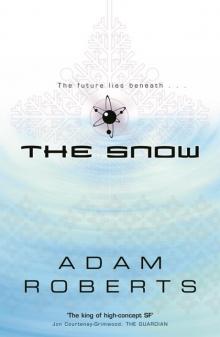 The Snow
The Snow Polystom (Gollancz Sf S.)
Polystom (Gollancz Sf S.)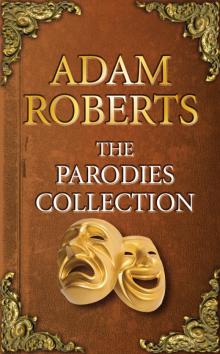 The Parodies Collection
The Parodies Collection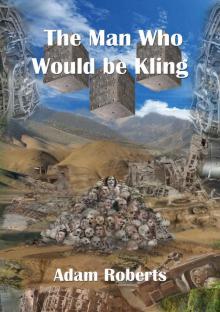 The Man Who Would Be Kling
The Man Who Would Be Kling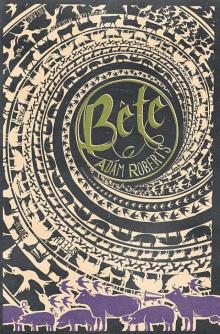 Bête
Bête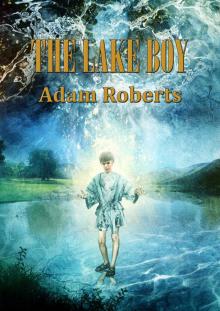 The Lake Boy
The Lake Boy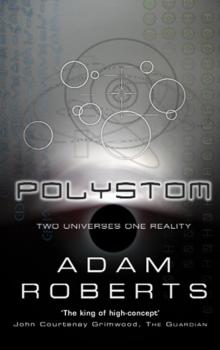 Polystom
Polystom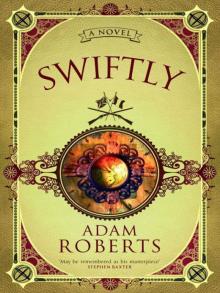 Swiftly: A Novel (GollanczF.)
Swiftly: A Novel (GollanczF.)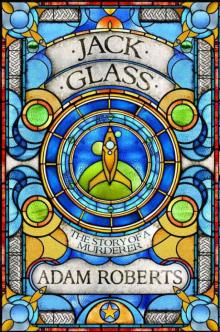 Jack Glass
Jack Glass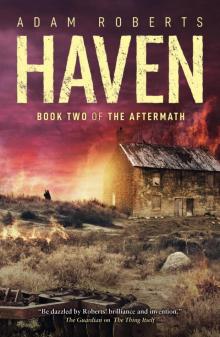 Haven
Haven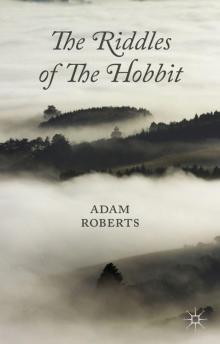 The Riddles of The Hobbit
The Riddles of The Hobbit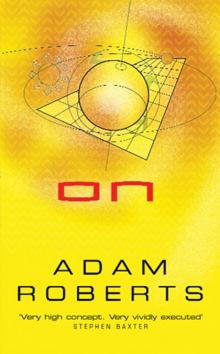 On
On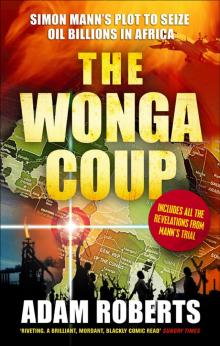 The Wonga Coup
The Wonga Coup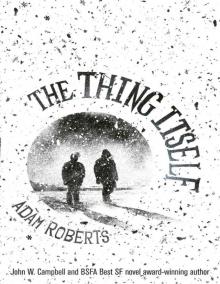 The Thing Itself
The Thing Itself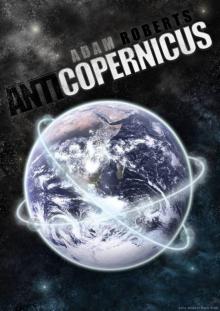 Anticopernicus
Anticopernicus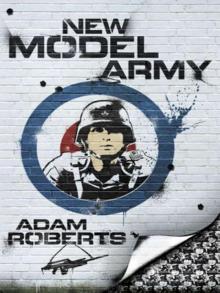 New Model Army
New Model Army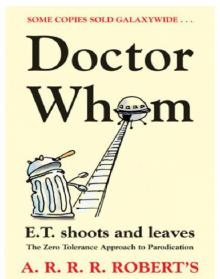 Doctor Whom or ET Shoots and Leaves: The Zero Tolerance Approach to Parodication
Doctor Whom or ET Shoots and Leaves: The Zero Tolerance Approach to Parodication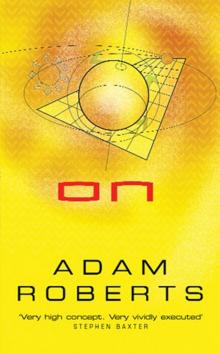 On (GollanczF.)
On (GollanczF.)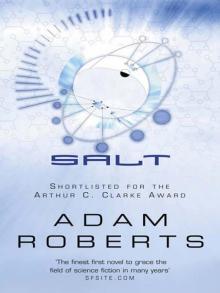 Salt
Salt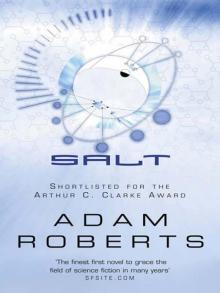 Salt (GollanczF.)
Salt (GollanczF.) By Light Alone
By Light Alone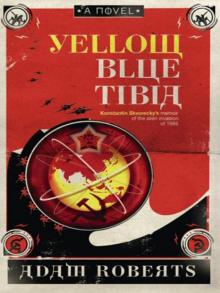 Yellow Blue Tibia
Yellow Blue Tibia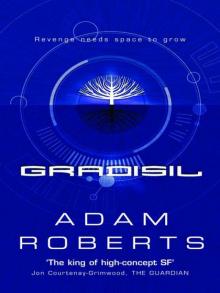 Gradisil (GollanczF.)
Gradisil (GollanczF.)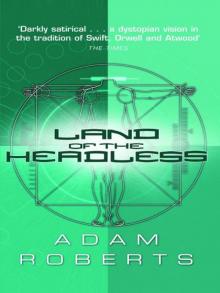 Land Of The Headless (GollanczF.)
Land Of The Headless (GollanczF.)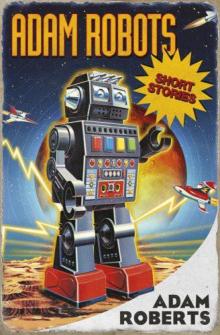 Adam Robots: Short Stories
Adam Robots: Short Stories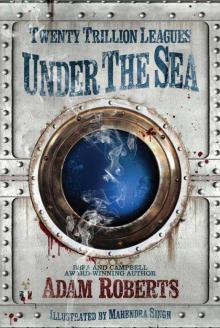 Twenty Trillion Leagues Under the Sea
Twenty Trillion Leagues Under the Sea